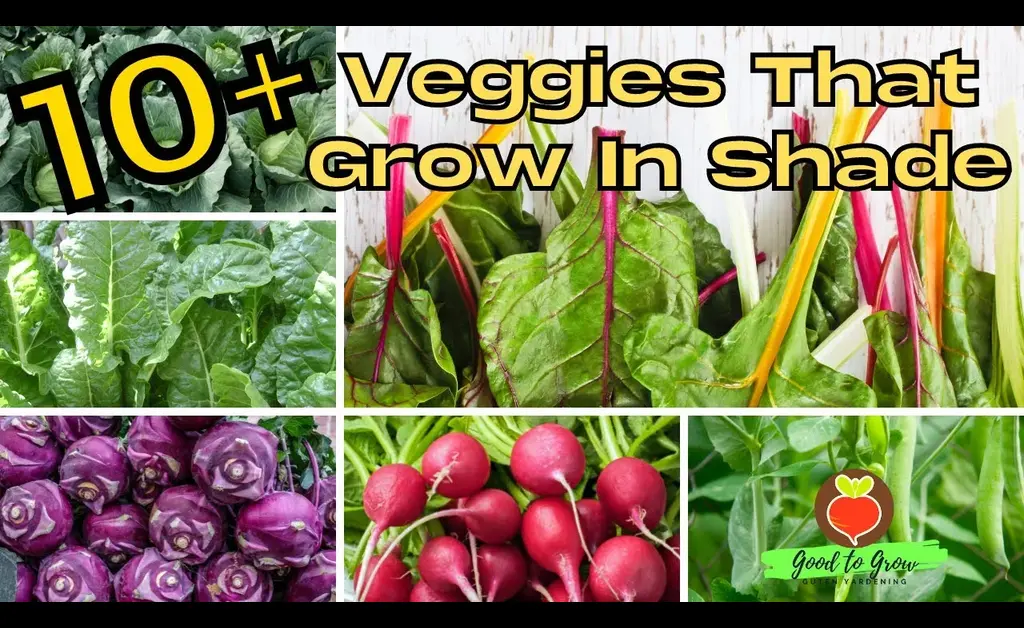While most vegetable crops crave abundant sunlight, not every garden is blessed with full sun exposure. If your planting spaces are predominantly shade, don’t fret. There are plenty of delicious edibles that can thrive in low-light areas. This guide explores 10 versatile and productive vegetables perfectly suited for cultivating in shady spots, helping you transform those dim corners into an edible oasis.
Benefits of Shade Vegetable Gardening
Growing vegetables in shady areas provides several advantages that savvy gardeners can capitalize on:
- Expands Usable Growing Space: By utilizing shaded nooks, corners and margins of your landscape, you exponentially increase the amount of productive square footage for gardening.
- Thriving Environment for Shade-Lovers: Some vegetable varieties simply grow stronger, healthier and even develop better flavors when protected from the intense, direct rays of sunlight.
- Preferred Microclimates: Dappled or filtered shade often creates a cooler, more humid micro climate that certain crops, like crisp leafy greens, tender roots and cool-season brassicas, absolutely thrive in.
- Enables Succession Planting: As sun patterns shift throughout the day and across seasons, shady areas open up new opportunities for successive plantings when other beds are in peak sun exposure.
- Extends Harvest Windows: With shadier spots delaying soil warming in spring and cooling quicker in fall, you can enjoy earlier and later harvests than what’s possible in full sun beds.
Assessing Your Shade Levels
Before choosing your shade vegetables and prepping planting areas, it’s important to clearly understand the levels and patterns of shade in your garden:
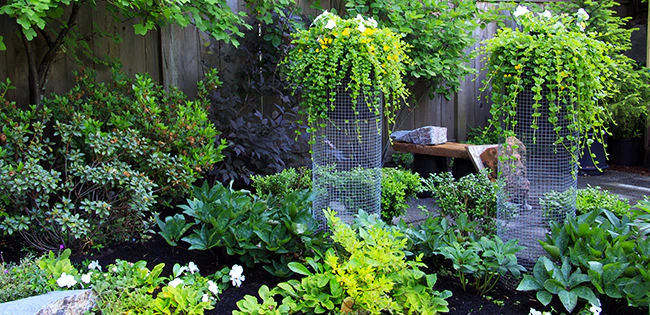
- Full Shade: These spaces receive less than 3 hours of direct sunlight daily. Very few vegetables grow well in complete full shade conditions.
- Partial Shade: Around 3-6 hours of dappled, filtered sunlight. This is the sweet spot where many leafy greens, root crops and cool-season veggies thrive.
- Dappled or Filtered Shade: Created by tall trees, arbors or lattices filtering and diffusing the sun’s rays with continually shifting patterns of sun/shade. Vegetables need at least 3-6 hours of this bright, indirect light daily.
To accurately assess shady areas, use sun tracking apps, watch shadow patterns at different times of day, and even use yard stakes to track sun exposure over a week or two. Morning sun exposure is often preferable to hot afternoon rays for shade crops.
Preparing a Shady Vegetable Garden
Once you’ve pinpointed suitable partially to fully shaded spots, take these steps to properly optimize the conditions for your future veggie patch:
- Amend the Soil: Work nutrient-rich compost, aged manure or other organic matter into the soil first to improve fertility and drainage in these low-light areas.
- Consider Raised Beds: If poor drainage is an issue in persistently shady zones, install raised beds, create raised rows, or build stratified or hugelkultur mounds to keep soil loose and aerated.
- Use Reflective Mulches: Applying reflective mulches like aluminum foil, white plastic, or light-colored rock can help amplify and reflect available light up to your plants’ leaves.
- Proper Spacing is Crucial: Avoid the temptation to overcrowd plants in shady areas, as this compounds issues by blocking air flow and available dappled light. Review recommended spacing for each crop.
The 10 Best Veggies for Growing in Shady Areas
Now, let’s dig into our top 10 picks for vegetables that can produce remarkably well in shady gardens, plus all the insider tips to maximize your harvests:
1. Leafy Greens
Hardy greens like lettuce, spinach, kale, chard, Mustards and Asian greens are among the most shade-tolerant vegetable crops around. Here’s how to grow them:
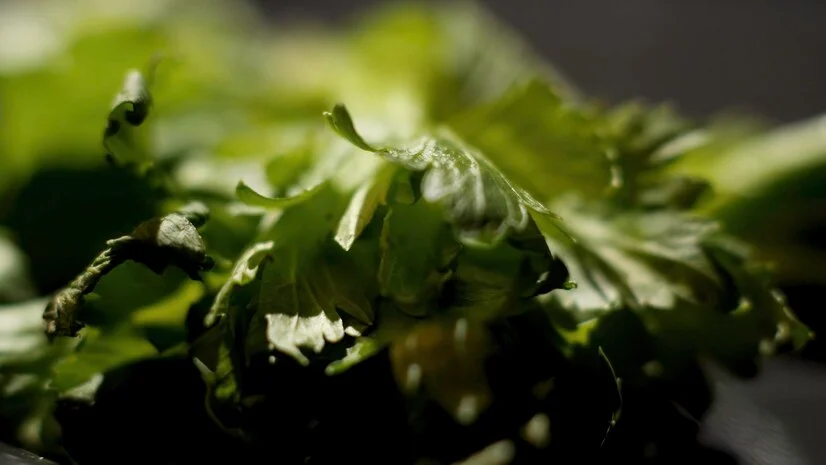
- Ideal Light Conditions: At least 3-4 hours of dappled or morning sunlight. Leafy greens prefer partial to full shade once temperatures rise.
- Planting Times: For a continual supply, succession sow seeds directly every 2-3 weeks, starting in early spring through late summer.
- Quick Maturing Times: Most leaf lettuces and greens reach maturity rapidly, as soon as 30 days from sowing in ideal conditions.
- Potential Issues: Monitor closely for slugs/snails and fungal diseases like downy mildew in overly damp shady areas. Ensure good air flow and drainage.
- Variety Suggestions: For lettuce, consider Boston, Butter crunch, Ruby and oak leaf types. Kales like Lacinato, Red Russian and Siberian also excel. Mustards like Ruby Streaks add vibrant color.
“What is more curative for the body and soul than crisp lettuce and leafy greens harvested from one’s own shaded patch?” – Farmer’s Almanac, 1938
2. Root Crops
Many tasty root crops like beets, carrots, radishes, turnips and rutabagas are surprisingly tolerant of shaded growing conditions in the home garden. Key tips:
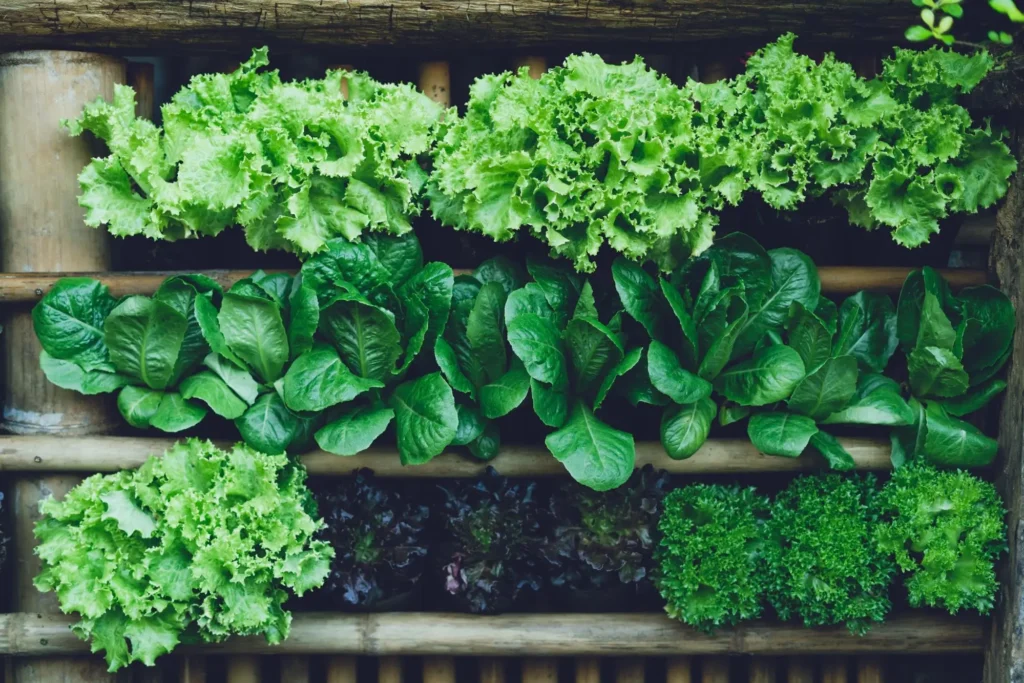
- Sun Requirements: Around 3-6 hours of dappled or morning sun work well. Excessive direct heat can cause many roots to become woody, pale or bitter.
- Tender Root Benefits: Root crops grown in partial shade often develop sweeter, crisper, smoother-skinned and more tender roots compared to full sun counterparts.
- Soil Prep is Paramount: Work soil deeply, removing all rocks/debris, and amend by mixing in compost/sand to ensure loose soil for straight root development.
- Succession Sowing: For continual harvests, sow fresh rows or blocks every 2-3 weeks during the cooler spring and fall seasons.
- Suggested Varieties: For beets – Red Ace, Chioggia, Golden, Detroit Dark Red. Nantes or Chantenay carrots, White Icicle radishes, Purple Top turnips and Laurentian rutabagas.
3. Cole Crops
Broccoli, cauliflower, Brussels sprouts and cabbages – the classic cole crops – prefer partial shade and can provide abundant harvests. A few tips:
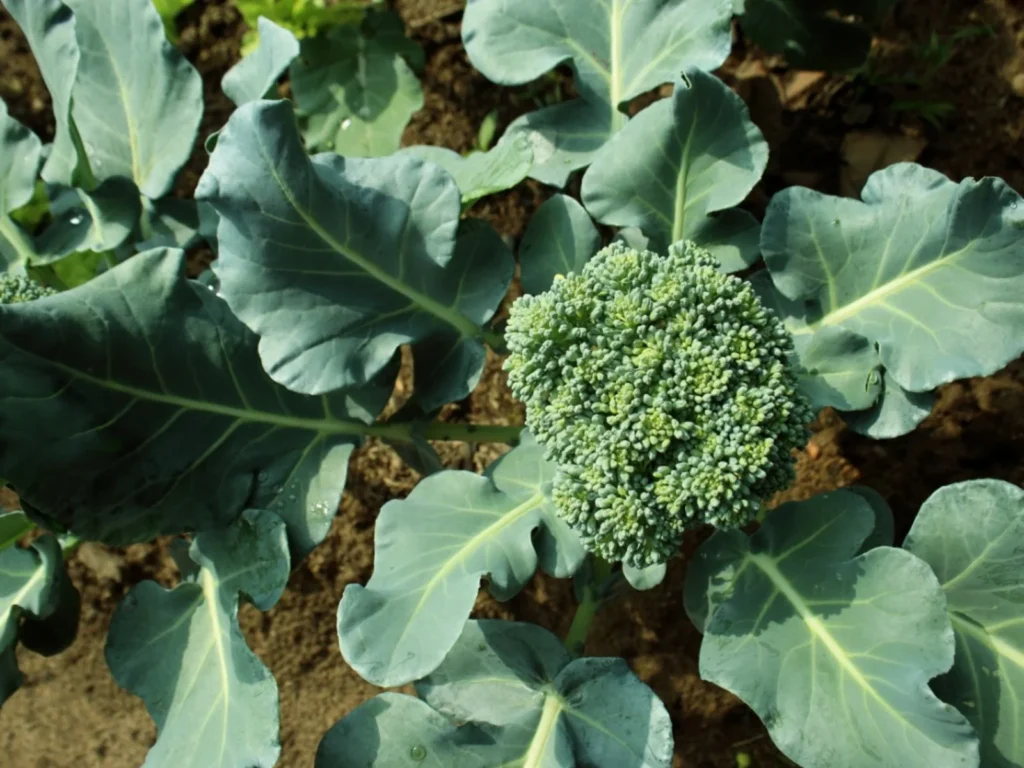
- Light Needs: At least 3-6 hours of bright, dappled or morning light daily. Inadequate light results in poor growth and loose, underdeveloped heads.
- Direct Seed or Transplant: You can sow seeds directly once temps allow, or start transplants indoors 4-6 weeks ahead for an early start.
- Consistent Moisture Aids Heading: For dense, tight head formation in broccoli, cauliflower and cabbage varieties, strive for evenly moist but well-drained soil.
- Cool Conditions Preferred: These cole crops tend to “bolt” or open prematurely in extended hot weather, so partial shade is ideal in warm climates.
- Variety Picks: Green Magic, DeCicco or Premium Crop broccoli, Snowball or Candid Charm cauliflower, Jade Cross or Red Express cabbages. Long Island Improved Brussels sprouts.
4. Peas
These cool-season legumes not only tolerate but often thrive in shady conditions! A few pea-growing pointers:
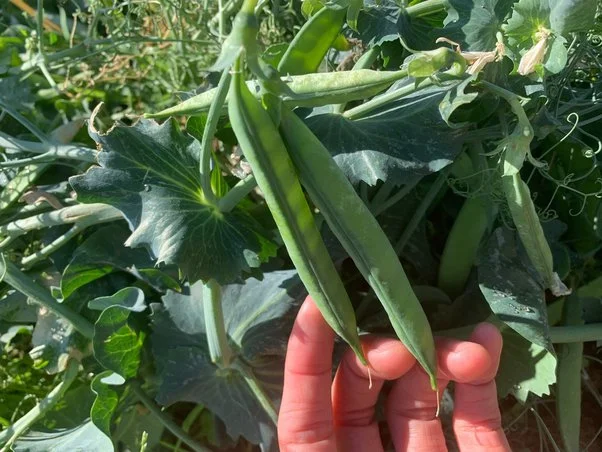
- Sun Needs: At least 5 hours of dappled or afternoon sun is ideal. Peas appreciate partial shade in warmer areas.
- Early Sowing Times: As soon as soil can be worked, sow peas! They prefer the cooler temps of very early spring.
- Trellising is a Must: Whether short bush types or towering telephone peas, providing a short trellis will maximize available light.
- Quick to Mature: Most pea varieties go from seed to table in just 50-65 days, providing an early shaded garden harvest.
- Picking Encourages More: Don’t let peas go to waste on the vine – frequent picking will spur plants to continually produce more over a 2-3 week period.
- Variety Highlights: For snap/edible pod peas, try Cascadia or Super Sugar Snap. Shelling types like Wando are classic, or mix in snow peas like Oregon Sugar Pod.
5. Beans
While warm-weather beans appreciate a decent amount of sunlight for optimal production, many bush and pole varieties can still produce respectably in partial shade gardens.
- Light Levels: Around 6 hours of dappled, bright light is advisable for beans. Morning and late afternoon sun is preferable in hot climates.
- Bush vs Pole Types: More compact bush beans like Contender or Royal Burgundy do well with less sun than vigorous pole bean varieties.
- Support for Climbers: If growing vertical pole varieties, be sure to add trellises, stakes or protective cages to maximize available sunlight exposure.
- Continual Planting: For an ongoing harvest, sow a new row of beans every 2-3 weeks until midsummer, then allow final planting to mature.
- Harvest Frequently: Don’t allow mature beans to remain on the plants, as this will slow production. Pick every few days during the peak.
6. Brussels Sprouts
As part of the cole crop family, Brussels sprouts share their cool-weather, shade-tolerant trait with broccoli and cabbage relatives. Here are a few tips:

- Ideal Growing Conditions: At least 6 hours of dappled to partial shade, with protection from hot afternoon sun. Cool temps below 75°F are best.
- Soil Preparation: Work in plenty of aged compost, providing deep, nutrient-rich soil for their long taproot systems to anchor into.
- Long Season Crop: From transplanting to final sprout harvests, Brussels take 90-100 days to fully mature, so get them started early!
- Pinch Tops for Sprouts: Once the thick central stem develops sprout buds, pinch out the topmost growing point to focus energy into maturing the edible sprouts.
- Blanching the Stems: As sprouts form, blanch or cover the thick plant stems with soil, mulch or row covers to tenderize.
- Top Varieties: Tried-and-true favorites include the reliable heirlooms Long Island Improved and Churchill. Rubine displays unique purple coloration.
7. Potatoes
Hardy potato plants can tolerate a fair amount of shade, especially in hot climates where sheltered conditions help prevent scorching. Try these tips:
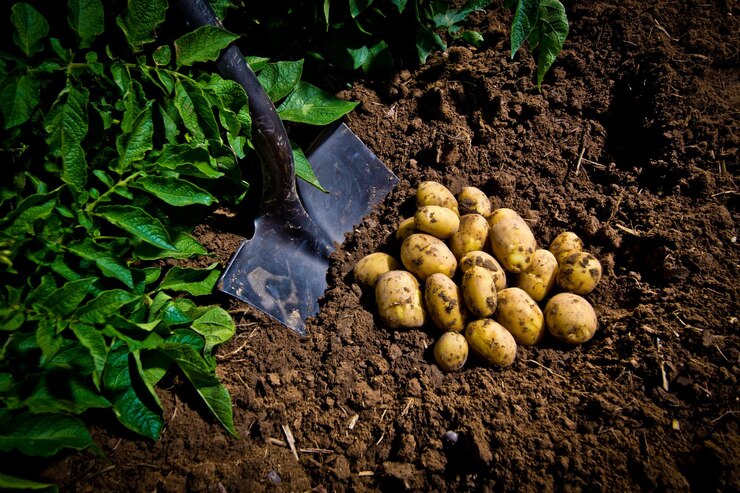
- Ideal Light Levels: Around 6 hours of dappled or filtered sun exposure per day is recommended for optimal tuber production. Full shade will limit yields.
- Planting Times: Plant seed potato pieces or small potted starts once soil reaches at least 50°F, as soon as 3 weeks before last spring frost date.
- “Hilling” is Important: As plants emerge, cover stems with loose soil or straw leaving just a few inches of plant exposed. This forces tubers to grow nice and large.
- Water Consistently: Potato plants need an inch of water per week, either from rain or manual watering. Inconsistent soil moisture leads to deformed tubers.
- Provide Support: Use stakes, cages or build low fences around plants as they grow taller to provide support and keep foliage upright.
- Variety Selection: Highly recommended choices for shady plots include blight-resistant Norgold Russet, Yellow Finn, German Butterball and Rose Finn Apple Fingerlings.
8. Leeks and Green Onions
While most bulb onions require full sun, the leaves and stems of hardy leeks and green bunching onions can be cultivated in fairly shady spaces. Some advice:
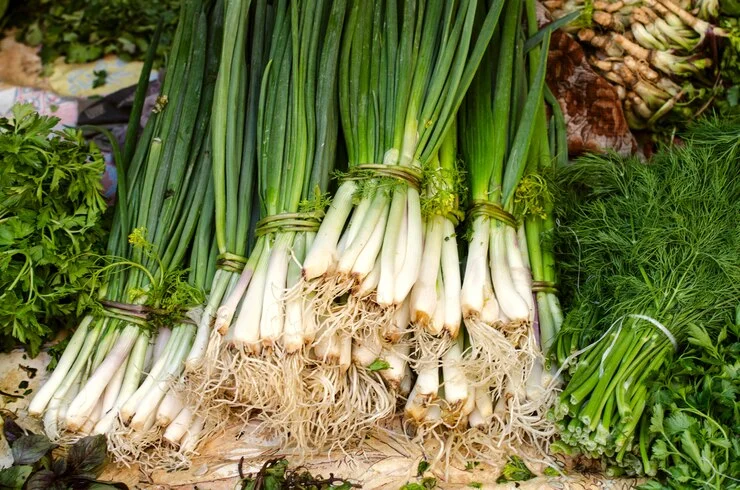
- Average Sun Needs: About 4-6 hours of direct light, though they can get by with slightly less dappled sun exposure as well.
- Cool Temperatures Preferred: Plants will bolt and become woody/inedible if exposed to excessive heat over 80°F for long periods.
- Plant Early for Best Results: Sow seeds or set out starts as soon as the ground can be worked in early spring for a jump on the season.
- Blanching Makes Them Sweet: As leeks mature, blanch bottom portions by heaping soil or mulch around base to exclude light for tender, blanched stems.
- Quick From Seed: Most bunching onions and leeks reach maturity within 60-90 days from direct seed sowing. Succession plant for continual harvests!
- Reliable Performers: King Richard and Lancelot are terrific shaded leek varieties. For bunching types, consider Evergreen Hardy or Egyptian Walking onions.
9. Celery
This underrated veggie with its distinctive flavor is often overlooked in home gardens, but it’s surprisingly well-suited to shady planting areas!
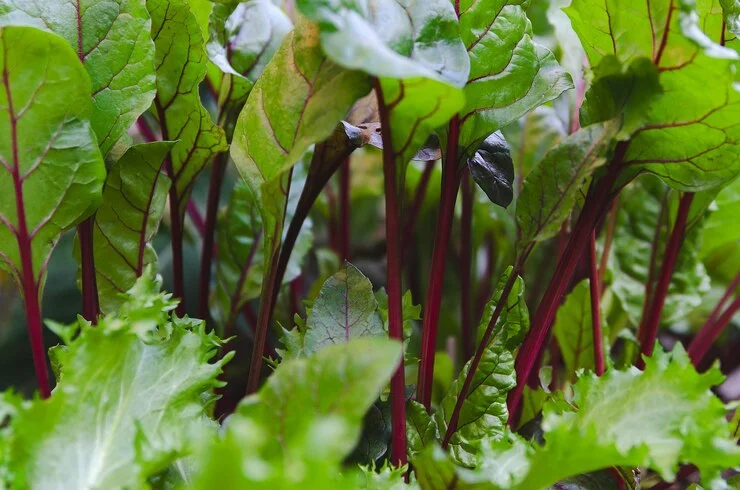
- Optimum Sun Levels: Around 5-6 hours of dappled to partial sun will produce compact, flavorful celery stalks without issues of bolting or bitterness.
- Cool Season Delight: While heat-tolerant varieties exist, celery as a whole greatly prefers cool, moist conditions and protection from baking sun.
- Transplanting is Best: Start celery from transplant seedlings rather than direct sowing for best results in low-light areas. Space 8-10″ apart in rows.
- Soil Requirements: Work substantial amounts of nutrient-rich compost into planting beds, and maintain consistent moisture through the long 90-120 day growing period.
- Blanching the Stalks: As celery plants mature, gradually cover the pale bottom stems and hearts with paper or cardboard cylinders to blanch and tenderize further.
- Great Self-Blanching Types: For shade-tolerance, consider modern self-blanching celery varieties like Tango, Ventura or the classic Utah heirloom type.
10. Rhubarb
“Harbinger of spring”, rhubarb fills a unique niche in the shaded garden. A few tips for growing these tangy, versatile perennial stems:
- Partial Shade Ideal: For robust harvests and to avoid stressed, tough, stringy stalks, rhubarb benefits from around 6 hours of dappled to partial shade daily.
- Cool Season Preference: Rhubarb thrives in cool, moist conditions – protect crowns from baking heat for longest harvests. Mulch helps insulate plants.
- Biennial Cropping: The first spring after planting, let rhubarb focus on establishing itself. Then harvest lightly year two, and more heavily starting year three.
- Divide Mature Clumps: After many years, dig up and divide overgrown rhubarb crowns to encourage more prolific stalks. Replant divisions immediately.
- Stop Harvesting in Summer: In late spring, stop removing stalks to allow rhubarb plants to rebuild reserves for the following season. Resume in early spring.
- Pretty and Prolific: For classic rhubarb flavor and heavy yields, stick with workhorses like Cherry Red, MacDonald and Canada Red. Victoria is also vigorous.
Shade Gardening Tips & Techniques
Even the most shade-tolerant crops will perform best when you adopt smart, specialized gardening techniques:
- Use Succession Planting: Sow seeds of greens, roots and other quick crops every 2-3 weeks for continual harvests as sun patterns change.
- Provide Consistent Airflow: Ensure adequate spacing between plants and rows for good air circulation to prevent mold, mildew and fungal diseases.
- Support Vining/Climbing Crops: Trellis peas, beans, and any vining crops vertically to expose as much plant surface area to the limited light as possible.
- Rotate Crop Locations: Replenish nutrients annually by rotating beds/rows each season. This also prevents potential disease issues.
- Interplanetary with Herbs/Flowers: Incorporate shade-loving herbs, edible flowers and plants that attract pollinators and beneficial insects.
- Monitor Moisture Closely: Shady areas can be slow to dry out. Ensure soil drains well and doesn’t stay saturated to avoid root rot issues.
People Also Ask
What vegetables can grow in full shade?
Very few vegetables thrive in full, dense shade conditions with less than 3 hours of dappled or filtered sun. Some options include leafy greens like lettuce, spinach and kale as well as radishes, rhubarb and shade-tolerant herbs.
How many hours of sun do shade vegetables need?
Most shade-tolerant vegetables need at least 3 hours of dappled, filtered or lightly shaded sunlight daily, with 4-6 hours being the ideal sweet spot for optimal growth and harvests. Morning sun is preferable to hot afternoon rays.
Do shade vegetables need special soil?
While shade vegetables don’t require specialized soils, it’s critical to prepare beds by mixing in nutrient-rich compost or aged manure first. Good drainage is also essential
